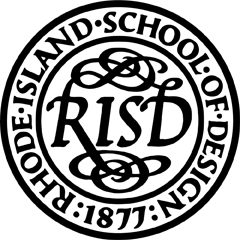Biographical note
Heinrich Schwarz was born 1894 November 9 in Prague and graduated from the Akademisches Gymnasium (Vienna) in 1913. He attended the University of Vienna, 1913-1914, then served in the Austro-Hungarian military returning to the University of Vienna in 1919 to continue his studies. He wrote his dissertation on the origins of Austria lithography under the guidance of Max Dvorak and was awarded a doctorate in 1921. Schwarz began his career in Vienna as a curatorial assistant in the Albertina Print Room from 1921 until 1923 when he was appointed curator of the Austrian State Gallery in the Belvedere Palace.
While working at the Modern Gallery in Vienna Schwarz organized an exhibition on the works of the 1840s Scottish painter and photographer, David Octavious Hill, displaying 180 calotype photographs. In 1931 Schwarz published the first full-length monograph on a photographer, David Octavious Hill: Der Meister der Photographie. Nazi Germany’s annexation of Austria led to his dismissal from the museum because of his Jewish ancestry. Schwarz came to the United States in 1940 with the assistance of the Emergency Committee in Aid of Displaced Foreign Scholars and Beaumont Newhall of the Museum of Modern Art.
Newhall’s 1937 Museum of Modern Art exhibition, “Photography, 1839-1937,” included works by David Octavious Hill on loan from the Albright Art Gallery (Buffalo, NY). The Albright was the first American museum to exhibit Hill’s work as part of their “International Exhibition of Pictorial Photography” (1910). Schwarz began his U.S. career at the Albright Art Gallery in 1941 as Research Scholar and Resident Assistant under the directorship of Gordon Bailey Washburn. His personal collection of calotypes by Hill and his colleague Robert Adamson was shown at the Museum of Modern Art in 1941 September. Schwarz served on the Museum of Modern Art's Advisory Committee on Photography, 1943-1944.
Washburn left the Albright in 1942 to become director of the Rhode Island School of Design Museum of Art and Schwarz followed in 1943 to become a Research Assistant. Schwarz was charged with studying the museum’s collection, gathering together all written and pictorial materials relating to the works of art, and making them more useful to students and researchers. In 1947 Schwarz became Curator of Painting, Drawings, and Prints, a position he held until 1954. During his tenure at RISD, Schwarz was credited with building the Print Collection and bringing a continental perspective to his work. Schwarz had maintained his connections with European dealers, collectors, and curators. These connections combined with his interest in photography, lithography, and print-making were valuable assets that he brought to the RISD community. Schwarz’s contribution to the museum included exhibitions on early photography, including the calotypes of David O. Hill and Robert Adamson, old master paintings, American folk art, pre-Columbian art, and noteworthy works such as “Landscape with a Mill,” circa 1653-1657, by Sebastian Bourdon and “Seine at Giverny,” 1885, by Claude Monet. His scholarship on photography was both ground-breaking and influential. Later writers such as Newhall, Aaron Scharf, Van Deren Coke, and Peter Galassi were influenced by Schwarz’s writings.
Heinrich Schwarz married Elisabeth Arany in New York City 1948 August. He left RISD in 1954 to become Curator of the Davison Art Center and Professor of History of Art at Wesleyan University in Middletown, CT. He worked there until his retirement in 1972. Heinrich Schwarz died 1974 September in New York.


